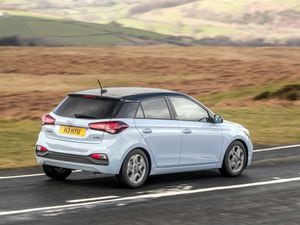How can I make my car more efficient?
In a time when efficiency is key, what do you do to make your own car a little more efficient?

Efficiency is a key topic in motoring at the moment. Manufacturers are striving to make their new cars as clean and as efficient as possible to not only aid the environment but meet stringent new emissions targets too.
But what if you already own a car and want to make it a little cleaner, can it be done? Let’s take a look.
So can I actually make my car more efficient?
There are some steps you can take which will make your car a little more economical to drive around. Though make no mistake they won’t make seismic changes, a couple of small switches could contribute to a reasonable fuel saving.
Where do I start then?
One of the easiest ways make a change is to look at the excess weight that the car is carrying. Have you got old shopping bags, shoes or boxes left in the boot, or is the cabin cluttered with items?

Get rid of these and you’ll be making the car lighter, meaning it’ll use less fuel to power. As we said, these are simple changes – but they will make a difference.
What about tyres? Do they make a difference?
Absolutely. An underinflated tyre can cause a big difference when it comes to fuel economy, so making sure that they’re pumped up to the manufacturer’s recommended pressures can make a real difference, particularly if you’re travelling long distances.

To find the correct pressure for your car, either look in the handbook or check behind the fuel filler cap – a vehicle’s pressures are often listed here.
Will my roof rack make any difference too?
Definitely. Having a roof rack on your car – this could be to carry a bike, topbox or kayak carrier – creates additional drag. Because of this, your vehicle needs more fuel to ‘push’ itself along resulting in – you guessed it – higher fuel bills.

So if they’re not being used, lop those racking systems off your car’s roof. You should find that there’s less ‘whistling’ coming through into the cabin, too.
Will getting my car serviced help?
Ensuring that your car is properly maintained is one of the key ways to keep it running as smoothly as possible. That means having its oil and filters changed at proper intervals, or even sooner if you’re doing a lot of miles.

A well-maintained engine is a smooth and efficient engine, and this will, in turn, result in lower fuel bills and fewer emissions out of the exhaust pipe, too.
Does my air conditioning affect my car’s fuel usage too?
It really does. In fact, unless it’s particularly cold or hot, then you might be better off keeping that air-con switched off. It asks more of the engine and, in return, means that it uses more fuel.

Of course, if you’re uncomfortable then don’t refrain from using it, but at lower speeds, you might be better off opening the windows if you want a little fresh air. When travelling more quickly this isn’t the case, however, as open windows create more drag.
But what about my driving style? Does that hurt efficiency?
Of course. A few small tweaks to the way you drive can pay dividends when it comes to fuel economy, saving you precious pounds at the pumps.
So what can I do?
Well, for starters changing gears earlier than you usually might. Though it might be tempting to use the full rev-range to make forward progress, shifting earlier will put less strain on the engine and require it to use less fuel as a result.

So after initially pulling away, try moving up the gears a little quicker than usual.
What about hills? Can I use them to my advantage?
Definitely! It’s all about forward planning. If you see a hill coming up ahead, then accelerate a little earlier. Then, once you’ve got to the top, let off the accelerator earlier and allow the car’s natural weight and gravity to take you down the other side.
It might feel a little alien to begin with, but get into the habit and before long you’ll master this on-off approach to tackling hills in the car.
Does my route affect fuel use as well?
Yes. If you think about where you’re heading to then you can plan a route which avoids areas of high traffic or congestion. Being stuck in traffic uses more fuel, of course, so utilising your sat-nav or smartphone navigation app to avoid these sticky areas can really pay dividends.
Plus, if you know where you’re going you’re unlikely to get lost – which only increases your fuel use too.





